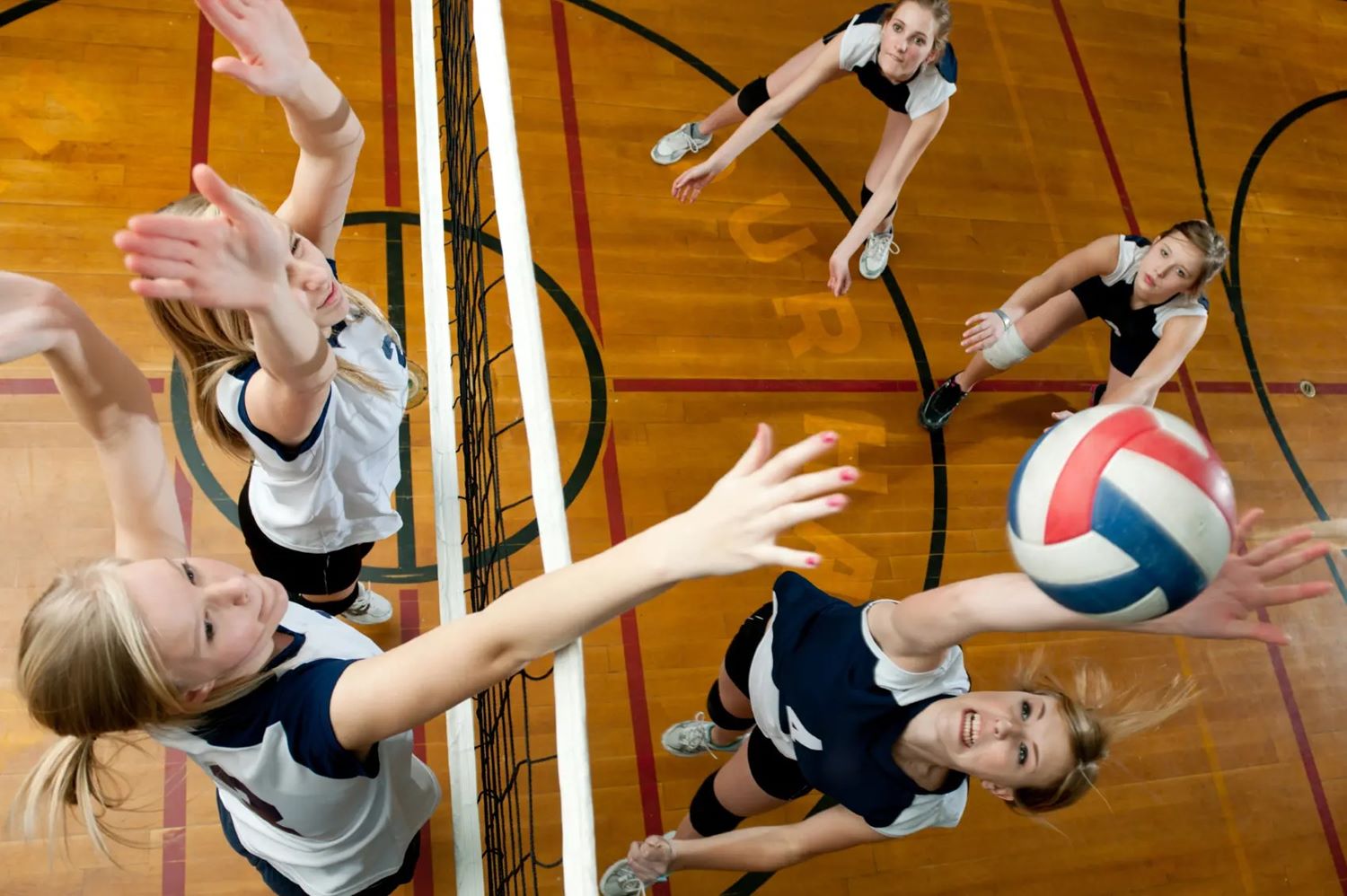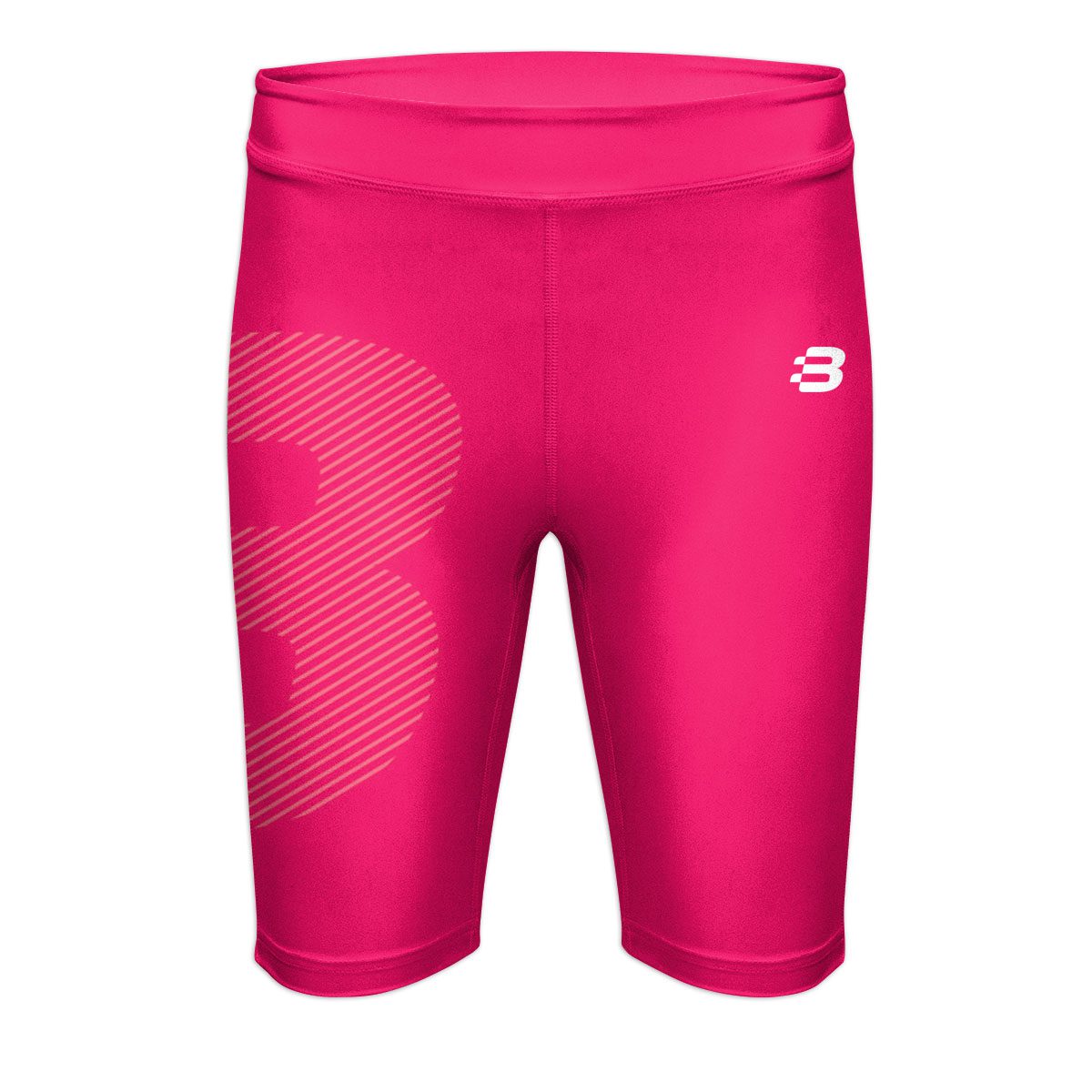

Featured
How To Increase Stamina For Volleyball
Published: October 15, 2023
Looking to improve your volleyball performance? Check out these effective ways to increase your stamina and take your game to the next level! Featured tips for enhanced endurance and agility.
Introduction
Welcome to the world of volleyball, where agility, skill, and strategy come together to create an exhilarating and fast-paced game. Whether you’re a seasoned player or just starting out, one key factor will greatly influence your performance on the court: stamina. Stamina, the ability to sustain prolonged physical and mental effort, is crucial for volleyball players to endure long matches, maintain optimal performance, and outlast their opponents.
In this article, we will delve into the importance of stamina in volleyball and explore effective strategies to increase it. From cardiovascular training to proper nutrition, we will cover all aspects necessary to boost your endurance and take your game to new heights.
Having high stamina in volleyball is essential for several reasons. First and foremost, it allows you to maintain a consistent level of play throughout the match, preventing a decline in performance as fatigue sets in. When your stamina is high, you can sustain your explosive movements, such as jumping, diving, and sprinting, without compromising your technique or speed.
Furthermore, stamina enables you to react quickly to unexpected situations and make split-second decisions on the court. Volleyball is a sport that requires constant movement and agility, and having ample stamina ensures that you can keep up with the fast-paced nature of the game.
Lastly, stamina plays a vital role in injury prevention. Fatigue can lead to a decrease in coordination, muscle control, and reaction time, which in turn increases the risk of accidents and injuries. By improving your stamina, you can reduce the chances of making mistakes due to exhaustion and maintain optimal physical condition throughout the entirety of the match.
Now that we understand the importance of stamina in volleyball, let’s explore some key principles and strategies that can help you increase it. By incorporating these techniques into your training regimen, you can build the endurance necessary to excel on the court and leave your opponents gasping for breath.
Understanding Stamina in Volleyball
Before we delve into the ways to increase stamina for volleyball, it’s important to have a clear understanding of what stamina means in the context of this sport. Stamina refers to the body’s ability to sustain prolonged physical and mental effort, allowing athletes to perform at their best for an extended period of time.
In volleyball, stamina is crucial due to the fast-paced nature of the game. Players constantly move, jump, and dive, requiring both cardiovascular endurance and muscular stamina. It’s not just about being able to endure long matches, but also about maintaining optimal performance throughout each set and rally.
Volleyball is a game of explosive movements, quick reactions, and continuous bursts of energy. A player with high stamina can repeatedly jump for spikes, react swiftly to incoming serves, and make agile movements on the court without experiencing significant fatigue or a decline in performance.
Stamina in volleyball is a combination of cardiovascular endurance, muscular endurance, and mental resilience. Cardiovascular endurance refers to the ability of the heart and lungs to supply oxygen-rich blood to the muscles, allowing them to perform efficiently over an extended period. Muscular endurance, on the other hand, is the ability of your muscles to repeatedly contract and generate force without fatigue.
Mental resilience is equally important in maintaining stamina. Volleyball requires focus, decision-making, and mental toughness, especially during intense rallies and crucial points. A player with strong mental resilience can stay mentally alert and make smart decisions even when fatigue sets in.
Understanding the different components of stamina in volleyball helps us identify the areas that need improvement. By targeting both cardiovascular endurance and muscular endurance, along with developing mental fortitude, players can significantly enhance their stamina and perform at their peak on the volleyball court.
In the following sections, we will explore various strategies and techniques to increase stamina specific to volleyball. From cardiovascular and interval training to strength and conditioning exercises, we will provide a comprehensive guide to help you improve your stamina and take your game to the next level.
Importance of Stamina in Volleyball
Stamina is of paramount importance in volleyball, as it directly impacts a player’s performance and overall success on the court. Let’s explore why stamina holds such significance in this fast-paced sport.
First and foremost, stamina allows players to endure long matches and extended rallies. Volleyball matches can last for hours, especially in high-level competitions. Without sufficient stamina, players may find it challenging to sustain their performance and maintain the required level of intensity throughout the game. Fatigue can lead to sloppy movements, slower reaction times, and decreased overall efficiency.
Moreover, stamina plays a crucial role in the execution of powerful jumps, explosive spikes, and quick lateral movements. Volleyball requires players to perform these actions repeatedly during matches, and having high stamina ensures that players can continue delivering their skills with precision and power. It enables them to stay agile on their feet, react quickly to the ball, and execute their strategies effectively.
Stamina is also closely tied to mental resilience. Volleyball is a mentally demanding sport that requires concentration, focus, and quick decision-making. As the match progresses and fatigue sets in, it can become increasingly challenging to stay mentally sharp. However, players with high stamina are better equipped to maintain their mental acuity and make smart decisions under pressure.
Furthermore, stamina plays a crucial role in injury prevention. Fatigue can compromise a player’s coordination, balance, and reaction time, increasing the risk of accidents and injuries. When stamina is lacking, players may not be able to execute movements properly, leading to strains, sprains, or other types of injuries. By having good stamina, players can minimize the risk of these injuries and ensure their longevity in the game.
Lastly, stamina can make the difference between victory and defeat. In volleyball, matches can be won or lost by a slim margin. When both teams possess similar skill levels, the team with better stamina often has the advantage. The ability to maintain a high level of play, even in prolonged and grueling matches, can be the determining factor that propels a team to victory.
Overall, stamina is crucial in volleyball for several reasons. It allows players to endure long matches, perform explosive movements, stay mentally focused, prevent injuries, and ultimately, achieve success on the court. By recognizing the importance of stamina and actively working to increase it, players can elevate their performance and excel in the challenging and dynamic world of volleyball.
Principles for Increasing Stamina
Increasing stamina is a gradual process that involves implementing various principles and strategies into your training routine. By following these principles, you can effectively build your endurance and improve your stamina for volleyball. Let’s explore some key principles to keep in mind:
1. Consistency: Consistency is key when it comes to increasing stamina. Regular training and practice sessions are essential for building endurance. Aim to have consistent workouts focused on improving cardiovascular fitness, muscular endurance, and mental resilience. Stay committed to your training schedule to see significant improvements in your stamina over time.
2. Progressive Overload: To increase your stamina, it’s important to gradually increase the intensity and duration of your training sessions. This principle of progressive overload involves challenging your body with slightly more demanding workouts as you progress. Gradually increase the duration of your cardio exercises, the number of repetitions in your strength training, or the intensity of your interval training. This gradual progression will help your body adapt and improve its capacity for prolonged physical effort.
3. Specificity: Make sure your training is specific to the demands of volleyball. While general cardiovascular exercises such as running or cycling are beneficial for overall endurance, incorporating volleyball-specific drills and movements will have a more direct impact on your stamina on the court. Focus on exercises that mimic the movements and energy requirements of volleyball, such as jump training, lateral movements, and quick direction changes.
4. Cross-Training: Engage in a variety of exercises to target different aspects of stamina. Incorporate both cardiovascular exercises, such as running or swimming, and strength training exercises into your routine. Cross-training helps to build overall fitness and prevents overuse injuries by working different muscle groups and maintaining balance in your training program.
5. Mental Training: Stamina is not just physical; it also involves mental resilience. Incorporate mental training techniques such as visualization, focus exercises, and positive self-talk into your routine. Strengthening your mental endurance will help you stay focused, motivated, and mentally strong even during challenging moments in a match.
6. Periodization: Implement a periodized training program to optimize your stamina improvement. Periodization involves dividing your training into different phases, each with specific goals and variations in intensity and volume. This approach prevents overtraining and allows for proper rest and recovery, which are essential for stamina development.
By incorporating these principles into your training regimen, you can effectively increase your stamina for volleyball. Remember that building stamina takes time and consistency, so stay committed to your training plan and be patient. With the right approach, you’ll start to notice improvements in your endurance levels, allowing you to perform at your best for longer durations on the volleyball court.
Cardiovascular Training for Volleyball Stamina
Cardiovascular training is a fundamental component of increasing stamina for volleyball. It focuses on improving the efficiency of your heart and lungs, enabling them to deliver oxygen-rich blood to your muscles more effectively during intense physical activity. By incorporating specific cardiovascular exercises into your training routine, you can boost your cardiovascular endurance and enhance your stamina on the volleyball court.
Here are some effective cardiovascular training methods to enhance your volleyball stamina:
1. Long-Distance Running: Long-distance running is a classic cardiovascular exercise that can significantly improve your endurance. Incorporate regular running sessions into your training, gradually increasing the duration and intensity over time. Focus on maintaining a steady pace to challenge your cardiovascular system and build stamina. Outdoor running can also enhance agility and spatial awareness, which are valuable skills in volleyball.
2. High-Intensity Interval Training (HIIT): HIIT involves short bursts of intense exercise followed by brief recovery periods. It is an excellent way to simulate the quick bursts of energy required in volleyball. For example, you can alternate between sprinting and jogging intervals or perform high knees, burpees, or squat jumps at maximum effort for short durations. HIIT not only improves cardiovascular endurance but also enhances anaerobic capacity, helping you sustain high-intensity activities for longer periods.
3. Jump Rope: Jumping rope is a versatile and efficient cardiovascular exercise that targets multiple muscle groups and improves coordination. Incorporate jump rope intervals into your training routine to enhance your cardiovascular fitness, footwork, and agility. Vary the intensity and duration of the rope jumping to simulate the different energy demands of volleyball movements, such as jumps and quick lateral shuffles.
4. Cycling: Cycling is a low-impact cardiovascular exercise that provides an excellent alternative to running while still challenging your heart and lungs. Whether it’s outdoor cycling or indoor stationary cycling, regular cycling sessions can improve cardiovascular endurance while also allowing for variation in terrain and resistance. Adjust the intensity level and duration based on your fitness level and gradually increase the challenge as your stamina improves.
5. Rowing: Rowing is a full-body cardiovascular exercise that engages both the upper and lower body muscles, improving overall endurance and stamina. Incorporating rowing machine workouts into your training regimen can enhance cardiovascular fitness, promote muscular strength, and improve coordination. Focus on maintaining a consistent pace and gradually increasing the duration of your rowing sessions.
Remember to warm up adequately before engaging in cardiovascular training and cool down afterward to prevent injuries and promote recovery. It’s also crucial to listen to your body and adjust the intensity and duration of your workouts based on your fitness level and personal capabilities. Consistency in cardiovascular training will gradually improve your stamina, allowing you to sustain high-intensity efforts and perform optimally during volleyball matches.
Interval Training for Volleyball Stamina
Interval training is an effective method for improving stamina specifically for the demands of volleyball. It involves alternating between periods of high-intensity exercise and periods of rest or low-intensity exercise. This type of training not only improves cardiovascular endurance but also enhances muscular endurance and the ability to recover quickly between explosive movements. Incorporating interval training into your volleyball training routine can help you build the stamina necessary to excel on the court.
Here are some key aspects of interval training for volleyball stamina:
1. Sprint Intervals: Sprint intervals mimic the quick bursts of energy required in volleyball. Find a suitable distance, such as 40 meters or 100 meters, and sprint at maximum effort for that distance. Take a short rest period between each sprint, allowing your heart rate to recover. Repeat the sprints for a desired number of repetitions, gradually increasing the intensity and duration of the sprint intervals as your stamina improves.
2. Shuttle Runs: Shuttle runs involve running back and forth between two designated points. Set up cones or markers to create a specific distance, such as 10 meters. Sprint to the first marker and touch it, then shuttle back to the starting point and touch it, before sprinting to the second marker. Repeat this pattern for a desired number of repetitions, ensuring a brief rest period between each shuttle run. This exercise simulates the rapid changes in direction and speed required in volleyball, improving your stamina and agility.
3. Circuit Training: Circuit training combines different exercises into a continuous sequence, targeting various muscle groups and elevating your heart rate. Design a circuit that includes both cardiovascular exercises, such as jumping jacks or high knees, and volleyball-specific movements, such as jump squats or lateral lunges. Perform each exercise for a set duration or number of repetitions before moving on to the next one. Incorporate short rest periods between exercises and repeat the circuit for multiple rounds.
4. Tabata Intervals: Tabata intervals are a specific form of high-intensity interval training. Each round consists of 20 seconds of maximum effort exercise, followed by 10 seconds of rest. Repeat this cycle for a total of 8 rounds, resulting in a 4-minute workout. You can choose a specific exercise, such as burpees or squat jumps, or rotate between different exercises. Tabata intervals are highly efficient for improving both cardiovascular endurance and muscular stamina, making them ideal for volleyball players seeking to enhance their overall stamina.
5. Match Simulations: Another effective way to incorporate interval training for volleyball stamina is by simulating match conditions during practice. Set up drills that replicate the intensity and tempo of a real game. Perform specific volleyball movements, such as spike jumps or defensive dives, followed by a brief rest period. This type of interval training not only improves stamina but also enhances your ability to perform under pressure and maintain optimal performance for extended periods.
As with any training program, it’s important to gradually increase the intensity and duration of your interval training sessions. Start with shorter intervals and longer rest periods, and progressively decrease the rest periods while increasing the intensity over time. Remember to prioritize proper warm-up and cool-down routines, and listen to your body to prevent overexertion and injury. Consistent and strategically implemented interval training will help you boost your stamina for volleyball, allowing you to perform at your best throughout matches.
Strength and Conditioning for Volleyball Stamina
Strength and conditioning training play a vital role in increasing stamina for volleyball. Building strength and improving overall physical fitness can enhance your muscular endurance, reduce fatigue, and support your stamina on the court. By incorporating specific strength and conditioning exercises into your training routine, you can improve your stamina and perform at your best during volleyball matches.
Here are some key aspects of strength and conditioning training for volleyball stamina:
1. Resistance Training: Incorporate resistance training exercises to build muscular strength and endurance. Focus on exercises that target the major muscle groups utilized in volleyball, such as the legs, core, shoulders, and arms. Include exercises such as squats, lunges, step-ups, deadlifts, bench presses, rows, and shoulder presses. Perform multiple sets and repetitions with moderate to high intensity, gradually increasing the weight and resistance over time. Resistance training helps develop the muscular endurance necessary to maintain performance during prolonged matches.
2. Plyometrics: Plyometric exercises are explosive movements that require maximal muscle contraction followed by a quick stretch reflex. Incorporate plyometric exercises, such as box jumps, depth jumps, and lateral bounds, into your training routine. These exercises improve power, speed, and coordination, which are essential for the explosive movements in volleyball. Plyometrics also help improve muscular endurance and stamina by mimicking the rapid and intense actions required on the court.
3. Core Training: A strong and stable core is crucial for volleyball players to maintain balance, generate power, and transfer energy efficiently. Incorporate core exercises, such as planks, Russian twists, and medicine ball rotations, into your training program. Focus on strengthening the abdominals, obliques, back muscles, and hip muscles. A strong core improves overall stability and reduces energy waste, allowing you to perform movements more efficiently and maintain stamina throughout the match.
4. Agility and Quickness Drills: Agility and quickness are essential for volleyball players to react quickly to the ball and move efficiently on the court. Incorporate agility ladder drills, cone drills, and ladder shuttle runs into your training routine. These exercises enhance footwork, coordination, and reaction time, leading to improved stamina during fast-paced and dynamic gameplay.
5. Endurance Circuit Training: Endurance circuit training combines cardiovascular fitness with strength exercises to improve both stamina and muscular endurance. Design a circuit that includes a combination of cardiovascular exercises, such as jogging or skipping, with strength exercises, such as bodyweight squats or push-ups. Perform each exercise for a specific duration or number of repetitions before moving on to the next. This circuit helps improve cardiovascular fitness, muscular endurance, and the ability to sustain effort over extended periods.
6. Flexibility and Mobility Training: Include stretching and mobility exercises in your training routine to maintain optimal joint range of motion and prevent injuries. Perform dynamic stretching exercises before training or matches to increase blood flow and improve flexibility. Incorporate mobility exercises, such as hip openers or shoulder stretches, to maintain and enhance the range of motion required for various volleyball movements.
Remember to consult with a fitness professional or coach to ensure proper form and technique when performing strength and conditioning exercises. Also, progressively increase the intensity and difficulty of your workouts to avoid overtraining and injuries. By incorporating strength and conditioning training into your routine, you can build the necessary stamina and endurance to excel in the challenging and demanding sport of volleyball.
Nutrition and Hydration for Volleyball Stamina
Proper nutrition and hydration are vital for maximizing stamina and performance in volleyball. The food and beverages you consume directly impact your energy levels, muscle function, and overall endurance. By fueling your body with the right nutrients and maintaining optimal hydration, you can enhance your stamina on the volleyball court. Here are some key aspects of nutrition and hydration for volleyball stamina:
1. Balanced Diet: Opt for a well-balanced diet that includes a variety of nutrient-rich foods. Focus on consuming lean proteins, such as chicken, fish, tofu, or legumes, which help repair and build muscles. Incorporate complex carbohydrates like whole grains, fruits, and vegetables, which provide a sustained source of energy. Include healthy fats from sources like nuts, avocados, and olive oil, which support overall health and provide long-lasting energy.
2. Pre-Game Meals: Consume a well-rounded meal that includes a good balance of carbohydrates, proteins, and fats about 2-3 hours before a volleyball match. This meal should be easy to digest and provide sustained energy throughout the game. Opt for foods like whole grain pasta or rice, lean proteins like chicken or fish, and include vegetables or a side salad. Avoid high-fat and greasy foods that can cause sluggishness or digestive discomfort.
3. Hydration: Hydration is crucial for maintaining stamina and preventing fatigue on the volleyball court. Drink water consistently throughout the day, aiming for at least 8-10 glasses or more depending on your activity level and sweat loss. During training and matches, sip on water or isotonic sports drinks to replenish electrolytes lost through sweat. Proper hydration helps maintain optimal muscle function, mental alertness, and prevents the onset of dehydration-related fatigue.
4. Snacking: Incorporate nutrient-dense snacks into your daily routine to provide a steady source of energy. Snacks like fruits, nuts, yogurt, or granola bars can help keep your energy levels stable between meals and sustain your stamina during training or matches. Opt for snacks that are high in carbohydrates and contain a moderate amount of protein and healthy fats.
5. Post-Game Recovery: After intense training or matches, prioritize post-game recovery nutrition. Consume a combination of carbohydrates and proteins within 30-45 minutes after exercise to replenish glycogen stores and support muscle recovery. This can be in the form of a protein shake, lean protein with whole grain carbohydrates, or a balanced meal. Additionally, hydrate adequately to replenish fluid loss due to sweating.
6. Individual Requirements: Understand that nutrition and hydration needs vary for each individual. Factors such as age, body composition, training intensity, and weather conditions can all impact nutritional requirements. Consult with a sports nutritionist or registered dietitian to tailor a nutrition plan that specifically suits your needs and goals. They can provide personalized guidance on calorie intake, macronutrient distribution, and overall dietary strategies to enhance your volleyball stamina.
Remember that consistency and adherence to a balanced diet and hydration routine are key for optimizing your stamina. Pay attention to your body’s needs and adjust your nutrition and hydration practices accordingly. By fueling your body with the right nutrients and maintaining proper hydration, you can support your stamina and perform at your best on the volleyball court.
Rest and Recovery for Volleyball Stamina
Rest and recovery are integral components of improving stamina and performance in volleyball. Adequate rest allows your body to repair and rebuild itself, ensuring that you can maintain high energy levels and sustain your stamina on the court. Here are some key aspects of rest and recovery for volleyball stamina:
1. Sleep: Getting sufficient sleep is crucial for optimal recovery and stamina. Aim for 7-9 hours of quality sleep each night. During sleep, your body undergoes essential processes such as muscle repair, hormone regulation, and mental rejuvenation. Good sleep habits contribute to improved cognitive function, quicker reaction times, and enhanced physical endurance. Make sleep a priority in your training regimen to support your stamina and overall well-being.
2. Active Recovery: Incorporate active recovery days into your training schedule. On these days, engage in light activities such as swimming, yoga, or gentle stretching. Active recovery helps promote blood circulation, reduce muscle soreness, and enhance overall recovery. It also allows your mind and body to recharge, preventing burnout and improving your stamina in the long run.
3. Proper Warm-Up and Cool-Down: Before every training session or match, warm up properly with dynamic exercises that target the muscles and movements used in volleyball. This will increase blood flow, loosen up the muscles, and prepare your body for the demands of the game. Similarly, cool down after each session with static stretching or foam rolling to aid in muscle recovery and reduce post-workout soreness.
4. Massage and Self-Care: Consider incorporating regular massages or self-care techniques as part of your recovery routine. Massage helps reduce muscle tension, promote relaxation, and improve circulation. Additionally, self-care practices such as foam rolling, stretching, or using a lacrosse ball, can help release muscle tightness, improve flexibility, and enhance recovery.
5. Mindfulness and Stress Management: Mental rest is just as important as physical rest. Incorporate mindfulness practices, such as meditation or deep breathing exercises, into your routine to reduce stress and promote relaxation. Chronic stress can hinder recovery and negatively impact your stamina. By managing stress effectively, you can support your body’s ability to recover and maintain optimal stamina levels.
6. Listen to Your Body: Pay attention to your body’s signals and adjust your training schedule accordingly. Pushing through excessive fatigue or training with lingering injuries can lead to decreased stamina and potentially more severe issues. Allow for rest days or lighter training sessions when your body needs them. This will give your muscles time to recover, reduce the risk of overuse injuries, and ensure that you can perform at your best when it matters most.
Remember that rest and recovery are not signs of weakness, but essential components of a well-rounded training program. Give your body the time and resources it needs to repair, rebuild, and adapt. By prioritizing rest and recovery, you will optimize your volleyball stamina and performance, allowing you to consistently perform at your peak on the court.
Common Mistakes to Avoid while Increasing Volleyball Stamina
When it comes to increasing volleyball stamina, it’s important to avoid certain common mistakes that can hinder your progress and potentially lead to burnout or injury. By being aware of these mistakes, you can optimize your training and effectively improve your stamina. Here are some key mistakes to avoid:
1. Overtraining: One of the biggest mistakes athletes make is overtraining in an attempt to increase stamina quickly. While training intensity is necessary for improvement, pushing your body beyond its limits without proper rest and recovery can lead to fatigue, decreased performance, and an increased risk of injury. Listen to your body, allow for rest days, and balance your training to avoid overtraining syndrome.
2. Neglecting Proper Nutrition: Inadequate nutrition can negatively impact your stamina and overall performance. Avoid skipping meals, especially before training or matches, as this can lead to low energy levels and fatigue. Consuming a well-rounded diet, including adequate carbohydrates, protein, and healthy fats, provides the energy and nutrients your body needs to support stamina and recovery.
3. Insufficient Hydration: Hydration plays a critical role in maintaining stamina during volleyball matches. Dehydration can lead to decreased performance, fatigue, and an increased risk of injuries. Avoid the mistake of not hydrating adequately before, during, and after matches or training sessions. Be mindful of your fluid intake and ensure you are drinking enough water or electrolyte-rich sports drinks to replenish fluids lost through sweating.
4. Lack of Variety in Training: A common mistake is sticking to the same training routine without incorporating enough variation. Lack of variety can lead to boredom, plateauing in performance, and decreased motivation. Mix up your training routine by including different exercises, training modalities, and drills. This will keep your body challenged and engaged, leading to better overall stamina improvement.
5. Ignoring Strength and Conditioning: Focusing solely on cardio and endurance training while neglecting strength and conditioning can hinder your stamina improvement. Strength training plays a crucial role in building muscular endurance, which is essential for maintaining stamina on the volleyball court. Incorporate resistance training exercises and plyometric drills in your training regimen to improve overall strength and power.
6. Improper Technique: Using incorrect technique while performing volleyball movements can waste energy and lead to premature fatigue. It’s important to prioritize proper form and technique to optimize efficiency and conserve energy. Work with a qualified coach or trainer to ensure you are executing movements correctly and efficiently, reducing the strain on your body and enhancing your stamina.
7. Neglecting Rest and Recovery: Another common mistake is not giving your body enough time to rest and recover. Lack of rest can impede your stamina improvement and increase the risk of overuse injuries. Incorporate rest days into your training schedule and prioritize quality sleep to allow your body to regenerate and adapt to the demands of training.
8. Neglecting Mental Resilience: Stamina is not just physical; it also requires mental fortitude. Overlooking the mental aspect of stamina can hinder performance. Work on mental resilience techniques such as visualization, positive self-talk, and stress management to improve mental stamina and maintain focus and motivation during matches.
Avoiding these common mistakes will help you optimize your volleyball stamina training. Focus on a balanced approach, listen to your body, prioritize rest and recovery, and maintain proper nutrition and hydration. By doing so, you’ll be on the right path to enhancing your stamina and taking your volleyball performance to new heights.
Conclusion
Building stamina for volleyball is a multifaceted process that requires a holistic approach. Throughout this article, we have explored the importance of stamina in volleyball, the principles for increasing it, and various strategies to enhance your endurance. From cardiovascular training and interval training to strength and conditioning exercises, nutrition and hydration, rest and recovery, and avoiding common mistakes, each aspect plays a crucial role in improving your stamina and overall performance on the court.
Remember that increasing stamina is a gradual process that requires consistency, patience, and commitment. It’s important to tailor your training program to your individual needs and goals, taking into consideration your fitness level, strengths, weaknesses, and personal preferences.
By implementing the principles and strategies discussed in this article, you can make significant strides in enhancing your stamina for volleyball. Whether you’re a recreational player looking to improve your endurance or a competitive athlete seeking an edge in matches, the keys to success lie in consistent training, proper nutrition and hydration, adequate rest and recovery, and avoiding common pitfalls.
Take advantage of the information provided here and work closely with coaches, trainers, and professionals who can guide you on your journey to increased stamina. Remember, it’s not just about being physically prepared – mental resilience and motivation also play crucial roles in sustaining stamina during intense volleyball matches.
By prioritizing your physical and mental well-being, along with following a well-rounded training regimen, you can elevate your stamina levels and become a force to be reckoned with on the volleyball court. So, lace up your shoes, fuel your body with the right nutrients, and embark on the path to transforming your stamina and becoming the best volleyball player you can be!






